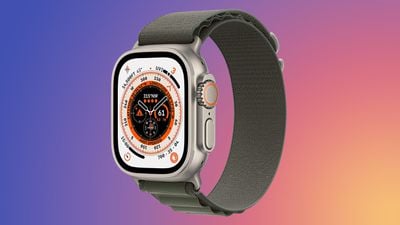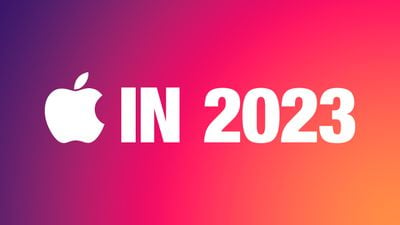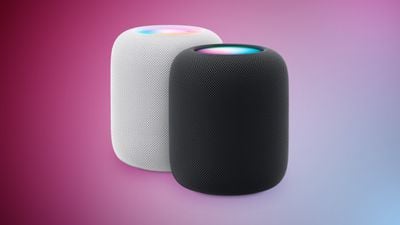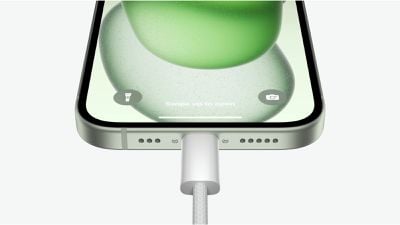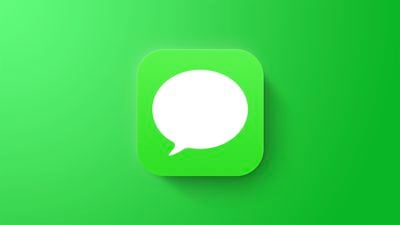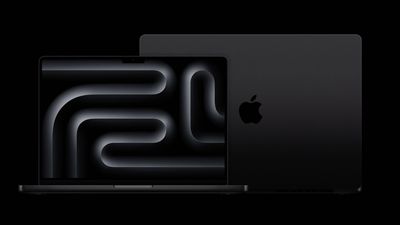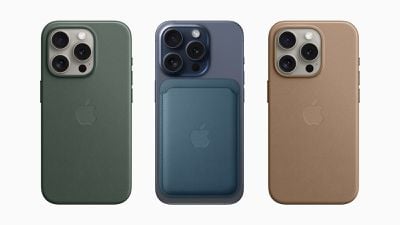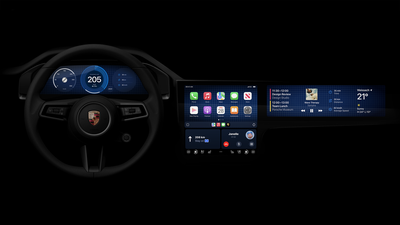
Real Exam Questions and Answers as experienced in Test Center
9L0-827 Braindumps with 100% Guaranteed Actual Questions | https:alphernet.com.au
9L0-827 availability - Final Cut Pro 7 End User Level One Updated: 2024 | ||||||||
| Ensure your success with this 9L0-827 dumps question bank | ||||||||
 |
||||||||
|
||||||||
|
Exam Code: 9L0-827 Final Cut Pro 7 End User Level One availability January 2024 by Killexams.com team | ||||||||
| Final Cut Pro 7 End User Level One Apple Final availability | ||||||||
Other Apple exams9L0-062 Mac OS X v10.6 Troubleshooting9L0-066 OS X Yosemite 10.10 Troubleshooting 9L0-314 Apple Hardware Recertification 9L0-619 Mac OS X Deployment v10.5 9L0-827 Final Cut Pro 7 End User Level One 9L0-964 Final Cut Pro 6 Level 1 MAC-16A ACMT 2016 MAC Service Certification SVC-19A Apple Service Fundamentals Exam | ||||||||
| We have Tested and Approved 9L0-827 Exams. killexams.com gives the exact and most accurate IT exam materials which practically contain all information focuses. With the guide of their 9L0-827 exam materials, you don't have to spend time on several books but simply need to burn through 10-20 hours to ace their 9L0-827 dumps of practice questions and answers. | ||||||||
| Apple 9L0-827 Final Cut Pro 7 End User Level One https://killexams.com/pass4sure/exam-detail/9L0-827 9L0-827 Which tool would perform the Before/After edit scenario shown above with the least amount of clicks or keystrokes? A. Ripple B. Roll C. Slide D. Slip Answer: B Question: 63 HOTSPOT In the image below, click the icon that allows you to show audio waveforms. Answer: Question: 64 HOTSPOT In the image below, click the button that allows you to add Motion Master Templates to your Final Cut Pro project. 36 9L0-827 Answer: 37 9L0-827 Question: 65 HOTSPOT In the image below, click the icon that lets you customize a menu for the disc. Answer: 38 9L0-827 Question: 66 HOTSPOT In the image below, click the item that allows you to select all of the filters applied to this clip simultaneously. 39 9L0-827 Answer: 40 For More exams visit https://killexams.com/vendors-exam-list Kill your exam at First Attempt....Guaranteed! | ||||||||
 2024 is shaping up to be a history-making year for Apple. Ranging from the long-awaited release of Vision Pro to a complete revamp of the iPad lineup, there’s a lot to be excited about. Here’s everything they know about what’s coming from Apple this year, broken down by product category. Spoiler alert: there’s a lot in the pipeline for this year. Vision Pro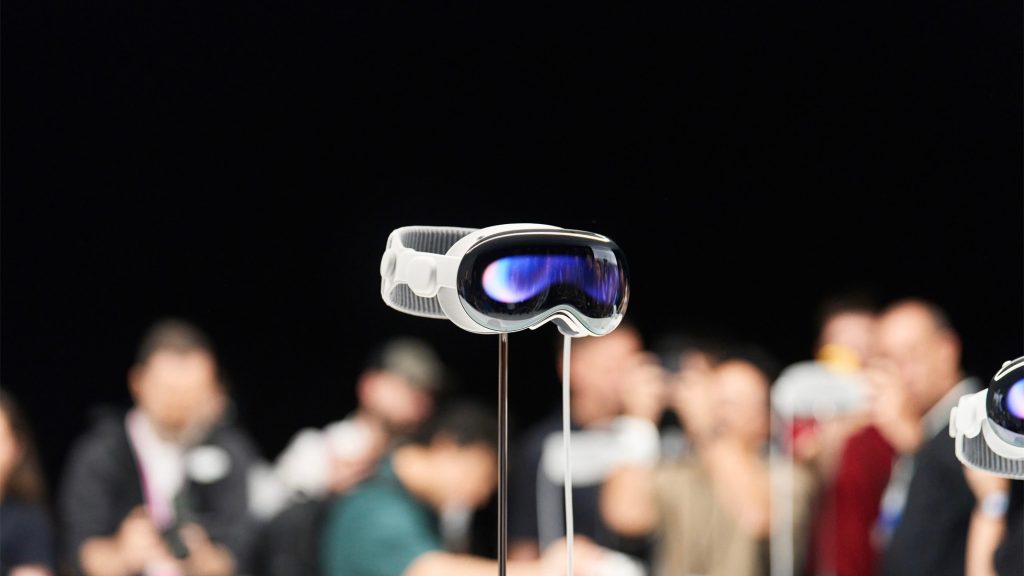 Apple’s 2024 is expected to kick off with the release of Vision Pro, Apple’s new spatial computing headset that was first announced at WWDC 2022. Apple says that Vision Pro will be released in “early 2024” in the United States and later this year in other countries around the world. According to reports from the likes of Bloomberg and Ming-Chi Kuo, Vision Pro is currently in mass production ahead of a launch to customers sometime in February. Vision Pro will start at $3,499, but Apple has not revealed any other pricing details for things like prescription lenses, storage configurations, and more. Learn more about Vision Pro in their hands-on coverage from WWDC 2022. Keep up with all of the latest rumors about Vision Pro’s release date in our dedicated guide. A complete iPad lineup overhaulIn 2023, Apple didn’t release a single new iPad. In fact, the only hardware announcement related to the iPad was the new Apple Pencil with USB-C. Exciting stuff, right? Thankfully, 2024 is shaping up to be a far more exciting year for the iPad. Rumors suggest that Apple has new versions of every iPad it sells in the works. iPad Air One of the biggest changes to the iPad lineup in 2024 is expected to be the addition of a new 12.9-inch iPad Air. Currently, Apple sells one iPad Air model at 10.9 inches. This would mark the first time that Apple has sold an iPad Air in two different screen sizes. Other than the new form factor option, they aren’t expecting many other changes to the iPad Air in terms of design or features. The only other notable difference will be a new processor, with Apple upgrading the iPad Air from its current M1 chip to the M2 for better performance and efficiency. The new iPad Air models are expected to be announced and released sometime around March. iPad Pro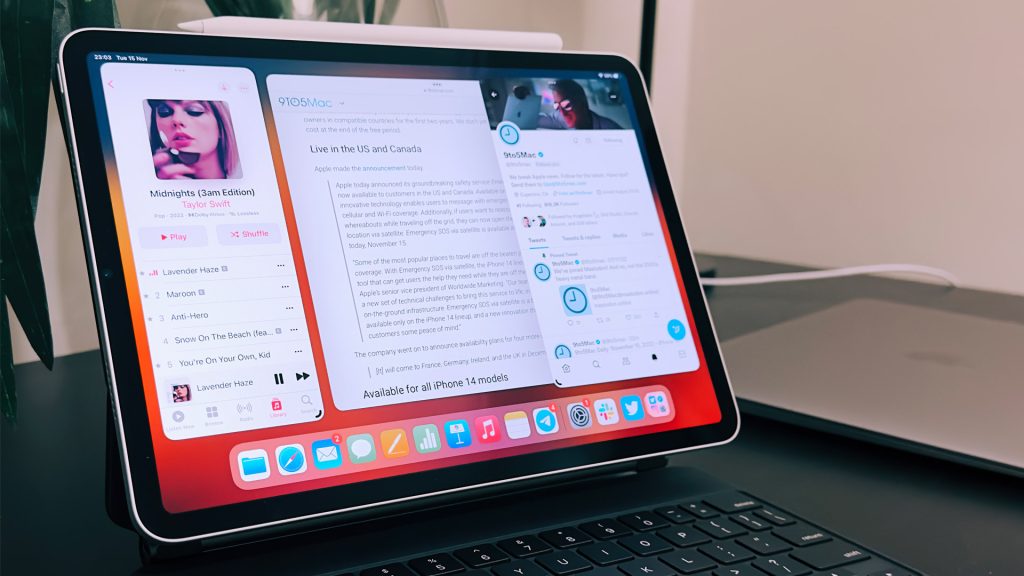 For fans of Apple’s top-end iPad Pro models, there’s a lot to be excited about in 2024. Most notably, the iPad Pro lineup will switch to OLED display technology. Currently, the 11-inch iPad Pro uses an LCD display while the 12.9-inch uses mini-LED. Additionally, the 2024 iPad Pro lineup will be available in 11-inch and 13-inch screen sizes. The slight increase from 12.9 inches to 13 inches could come in the form of smaller bezels, allowing Apple to increase the screen size while maintaining the same overall form factor. The switch to OLED for the iPad Pro lineup could also unlock other changes. For example, OLED displays could theoretically allow Apple to make the iPad Pro thinner. There have also been rumors of bigger design changes coming to the iPad Pro models, but whether those design changes will debut this year remains to be seen. On the inside, the iPad Pro models will use the latest-generation M3 processors. This will unlock improved performance and efficiency for things like pro-level apps, multitasking, and more. All of these changes, however, will increase the iPad Pro pricing. Not only are OLED panels more expensive than LCD and mini-LED, but Apple is also planning to use the most advanced version of OLED panels on the market. As it stands today, the 11-inch iPad Pro starts at $799, while the 12.9-inch iPad Pro starts at $1,099. You can learn more about the new OLED iPad Pro in their dedicated guide. This guide includes details about why Apple is switching to OLED and some of the benefits the change will offer. The new iPad Pro models are likely to be announced and released sometime around March. New Magic Keyboard and Apple Pencil 3 For the new iPad Pro models, Bloomberg has reported that Apple is working on a new Magic Keyboard accessory. The new Magic Keyboard will allegedly make the iPad Pro “look more like a laptop and include a sturdier frame with aluminum. On the other hand, the new iPad Air models will reportedly use the existing Magic Keyboard. Meanwhile, Apple is also said to be prepping a new version of the Apple Pencil to launch alongside the new iPad Pro. Details here are still a bit sparse, but rumors have pointed to a hardware change that supports interchangeable magnetically attached tips that simulate different instruments. iPad mini and iPad 10: Late 2024Last but not least, Apple is working on updated versions of the base model iPad as well as the iPad mini. These devices will be updated with faster processors, likely the A16 for improved performance and efficiency improvements. No other major changes are expected. Perhaps most notably, the introduction of the iPad 11 means that Apple will discontinue the iPad 9. The iPad 9 is the last model of the iPad to feature a Home button and a Lightning port. This will also allow Apple to discontinue the first generation Apple Pencil with a Lightning connector. The new iPad 11 and iPad mini 7 are expected to be announced and released sometime later in 2024. WWDC 2024In June, Apple will likely hold its annual Worldwide Developers Conference – or WWDC – event. This will include the launch of its next round of software platforms:
iOS 18 The headlining platform at WWDC 2024 will be iOS 18. In October, Bloomberg’s Mark Gurman provided an overview of Apple’s ambitions for iOS 18, namely focused on new artificial intelligence features. This report highlighted an “edict” within Apple and Craig Federighi’s software team to fill iOS 18 “with features running on the company’s large language model.” Here are the ways Apple is exploring adding AI to iOS 18:
Furthermore, in a surprising move, Apple announced in October that iPhones will start supporting RCS in 2024. RCS, short for Rich Communication Services, is the modern alternative to traditional SMS and MMS. This update is set to bring several features typical of iMessage to text interactions between iPhone and Android users. Apple indicated that RCS support will be introduced to the iPhone “later next year” through a software update. This timing hints at the possibility of integrating this feature into iOS 18. For more details on iOS 18, check out their complete guide. iOS 18 will likely be released to developers for beta testing in June, followed by a public beta in July, and a release to the broader public in September. More software announcementsUnfortunately, there haven’t been any details about what’s to come from Apple’s other software updates this year. We’d expect a lot of focus on visionOS, but no additional information is available. iPhone 16 and iPhone 16 Pro A new year means a new iPhone, and this year that will come in the form of the iPhone 16, iPhone 16 Plus, iPhone 16 Pro, and iPhone 16 Pro Max. For the iPhone 16 Pro models, one of the biggest changes will be that the displays are slightly larger. The iPhone 16 Pro is expected to feature a 6.3-inch display, an increase from the 6.1-inch display of the iPhone 15 Pro. The iPhone 16 Pro Max will reportedly feature a 6.9-inch display, an increase from the 6.7-inch display of the iPhone 15 Pro Max. Each iPhone 16 model will reportedly feature a new “capture button” on the right-hand side below the power button. This button will be dedicated to capturing video, with an emphasis on capturing spatial video that can be viewed on Vision Pro. In line with that, the iPhone 16 will feature a redesigned camera layout that allows it to capture spatial video. Currently, only the iPhone 15 Pro models can capture spatial video. Apple is clearly looking to expand spatial video features as it ramps up the launch of Vision Pro and the broader “Apple Vision” lineup. In terms of other camera changes, Ming-Chi Kuo has reported that the iPhone 16 lineup will get an upgraded 48-megapixel ultra wide camera. This is expected to behave similarly to the 48-megapixel main camera sensor in current iPhone models, where computational photography samples the raw 48-megapixels of information to produce a 12 or 24-megapixel final output image. The iPhone 16 Pro will add the same 5x telephoto camera that is currently available on the iPhone 15 Pro Max. Additionally, the iPhone 16 and iPhone 16 Plus will reportedly feature an upgraded version of the Action button that is currently exclusive to the iPhone 15 Pro models. The new Action button will allegedly include things like a force sensor for more flexibility. You can find all of the details about the iPhone 16 and iPhone 16 Pro in our dedicated guides. As of right now, they expect the iPhone 16 to be announced and released in September, but that timeline could shift based on things like production and supply chain disruptions. Apple Watch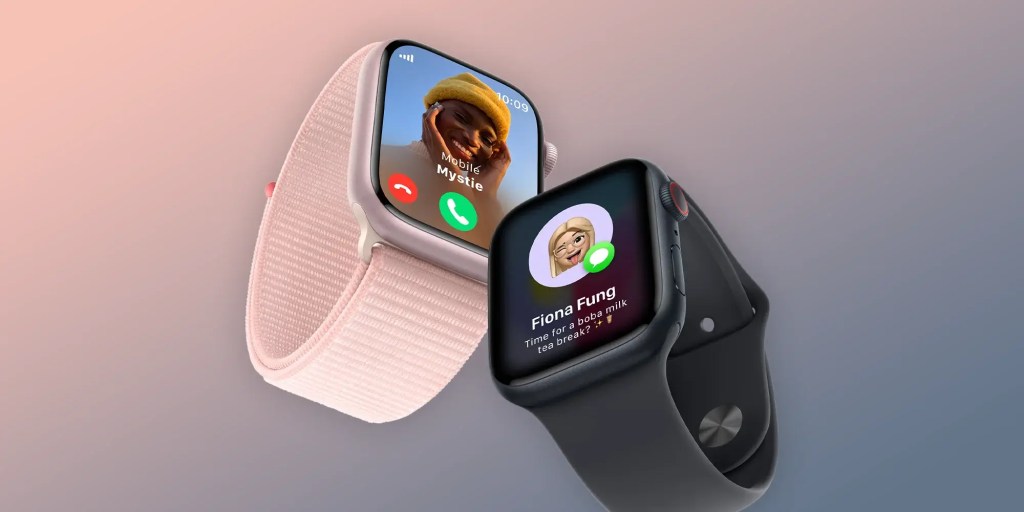 What exactly to expect from the Apple Watch this year is unclear. Rumors have indicated that Apple is working on a major new “Apple Watch X” product, but there is still some discrepancy about whether Apple Watch X will be ready to launch this year. The Apple Watch X has been described by Bloomberg as the biggest redesign of the Apple Watch since its launch in 2015. One of Apple’s specific focuses is on making the Apple Watch thinner. One of the biggest changes with the Apple Watch X will be a new magnetic system for attaching bands. Apple is reportedly planning to abandon the current band attachment mechanism, with engineers determining that it simply takes up too much internal space. Apple instead hopes that it can use that space for other things, such as a larger battery. The downside to this change, however, is that it will break compatibility with all existing Apple Watch bands. This means any Apple Watch band you have today won’t work with the Apple Watch X. Again, there is still some uncertainty as to whether or not the Apple Watch X will be ready for 2024. It’s possible the update won’t come until 2025. It’s also not particularly clear how the Apple Watch X will fit in the Apple Watch lineup. If Apple is ready to launch a new Apple Watch this year, we’d expect it to debut alongside the iPhone 16 lineup in September. The Mac If you’re a fan of the Mac, fear not. Apple has a few things in store for you in 2024 as well. The first M3-powered Macs debuted last October, starting with the 14-inch and 16-inch MacBook Pro and 24-inch iMac. This year, that transition to the M3 is expected to continue. First up, Apple is working on new versions of the 13-inch and 15-inch MacBook Air powered by the M3 chip. The new MacBook Air lineup is expected to be released sometime around March 2024. We’re also expecting a new version of the Mac Studio and Mac Pro powered by the M3 Max and M3 Ultra chips. Most recently, however, Bloomberg reported that these new desktop Macs aren’t expected “until the end of 2024 at the earliest, if not 2025.” In fact, Bloomberg reported in November that the M3 Ultra hasn’t even started “widespread testing” inside Apple. What about the Mac mini? That’s another unknown. The Mac mini is currently available in M2 and M2 Pro configurations. We’d assume an update to M3 and M3 Pro is coming at some point, but right now there aren’t any details on when. New AirPodsLast but not least, they have Apple’s AirPods lineup. For 2024, Apple is reportedly prepping a major update to its entry-level AirPods, and a not-so-major change for AirPods Max. AirPods 4 According to Bloomberg, AirPods 3 have not been as successful in sales as Apple had hoped, prompting the company to reevaluate its product range starting in 2024. The report details that both AirPods 2 and AirPods 3 are set to be phased out this year, with plans for two distinct versions of AirPods 4 in the works. The upcoming AirPods 4 models are expected to showcase a “hybrid design” that merges elements from both the AirPods 3 and AirPods Pro. However, unlike the AirPods Pro, these new models will not include interchangeable and customizable ear tips. Another significant change is the switch from Lightning to USB-C for charging. The two versions of the AirPods 4 will differ in certain key aspects. The higher-end variant of AirPods 4 will have features like noise cancellation and an upgraded charging case with advanced Find My integration and speakers for Find My alerts. The new AirPods 4 lineup is likely to be released sometime later in 2024. AirPods MaxFor AirPods Max fans, the story is far less exciting. Bloomberg has reported that new AirPods Max are coming sometime in late 2024, but the only change will be a switch from Lightning to USB-C for charging. There might also be new colors. If you were hoping for AirPods Max with a more modern chip inside, you appear to be out of luck. AirPods Max were first introduced in December 2020 and haven’t been updated since. They feature a Lightning port for charging and miss out on pretty much all of the new features Apple announced for AirPods at WWDC last year. Wrap upHere are some other smaller things Apple is working on, that may or may not materialize in 2025.
What are you most excited to see from Apple in 2024? Let us know down in the comments. FTC: They use income earning auto affiliate links. More. 
Yesterday Apple released iOS 17.3 beta 2 for the iPhone and iPadOS 17.3 beta 2 for the iPad, shortly after the release of these new beta it was discovered that the software was bricking iPhones. Apple has now removed the iOS 17.3 beta 2 and iPadOS 17.3 beta 2 from release, this means that both of these new betas are no longer available for developers to install and test out. Some iPhone users who installed the new iOS 17.4 beta on their device ended up with their device stuck in a boot loop, so Apple then decided to pull these new betas until the issue had been resolved. Once Apple has fixed the issue on the latest betas of iOS 17.3 and iPadOS 17.3, they will release the updated betas to developers again, this should happen this week assuming the bug can be fixed quickly. The iOS 17.3 and iPadOS 17.3 updates will include a range of new features, this includes a new Stolen Device Protection feature, This feature is far more than a minor enhancement; it fundamentally alters the dynamics of iPhone security when the device is in unauthorized hands. The security doesn’t solely rely on knowing the passcode. Instead, it incorporates several additional protective measures, such as mandating Face ID or Touch ID for specific operations and introducing delays when modifying security settings. Regarding music, Apple Music is revitalizing the concept of shared musical experiences with its reintroduction of the collaborative playlist feature. This functionality transcends the simple creation of playlists; it fosters a sense of musical community. By selecting the two-person icon within Apple Music, users can seamlessly begin a collective musical exploration with friends. These new betas come a couple of weeks after the previous beta, they are expecting Apple to release the final version of the software around the end of January or the start of February, assuming that this issue can be resolved. Source MacRumors Image Credit Samuel Angor Filed Under: Apple, Apple iPhone, Top NewsLatest Geeky Gadgets Deals Disclosure: Some of their articles include affiliate links. If you buy something through one of these links, Geeky Gadgets may earn an affiliate commission. Learn about their Disclosure Policy. Apple resumed sales of its existing smartwatches on Thursday, a day after a federal appeals court temporarily reversed an earlier ban on their import and sale in the United States. But the watches’ fate will ultimately depend on how a continuing legal fight plays out in federal court over the next few weeks. The company paused sales of the Apple Watch Series 9 and Watch Ultra 2 in its flagship stores on Dec. 21 and at retail locations on Christmas Eve. The pause was the result of a patent case that Apple lost in October. The ruling in that case became final on Tuesday, when President Biden’s administration declined to step in and reverse it. But on Wednesday, a federal appeals court ordered the government not to enforce it “until further notice” while the court considers Apple’s appeal. So could I buy an Apple Watch today?Yes. The company said on Wednesday that it would restart retail sales of the two new watches at some Apple stores that day, and in more stores by Saturday. Apple confirmed that the two watches were also made available for sale online on Thursday. Tell me more about this court fight.The case against Apple before the U.S. International Trade Commission focuses on technology that some Apple watches use to detect a wearer’s pulse rate by measuring the percentage of oxygen in their blood. The commission ruled in October that some models of Apple watches were infringing on patents held by two medical technology companies in California, Masimo and Cercacor Laboratories. It ordered Apple to stop selling the Apple Watch Series 9 and Watch Ultra 2 after Christmas. The Biden administration had 60 days to decide whether to veto the commission’s ruling. On Tuesday, it said it had chosen not to, making the ruling final. But on Wednesday, the federal appeals court granted a fresh request from Apple to pause enforcement of the ruling as the appeals process plays out. It gave the commission until Jan. 10 to respond to Apple’s request for a further delay in enforcing the ban. Is Apple going to disable the watch I got for Christmas?No, although the legal battle will ultimately determine whether sales, service and repairs of Apple’s existing watches continue over the long term. The battle may hinge partly on a proposed redesign of the two watches that Apple has submitted to the United States customs authorities for approval. Does this court fight apply to other Apple Watches?The ban that was temporarily paused on Wednesday applied to several other models that use the same pulse-monitoring technology, including the Apple Watch Series 6, 7 and 8, and all models of the Apple Watch Ultra. But those models are not currently sold at Apple stores or on the company’s website. (The ban did not apply to the Apple Watch SE.) What about international sales of these watches?The ruling only affected sales in the United States. Johnny Diaz contributed reporting. The Justice Department is in the late stages of an investigation into Apple and could file a sweeping antitrust case taking aim at the company’s strategies to protect the dominance of the iPhone as soon as the first half of this year, said three people with knowledge of the matter. The agency is focused on how Apple has used its control over its hardware and software to make it more difficult for consumers to ditch the company’s devices, as well as for rivals to compete, said the people, who spoke anonymously because the investigation was active. Specifically, investigators have examined how the Apple Watch works better with the iPhone than with other brands, as well as how Apple locks competitors out of its iMessage service. They have also scrutinized Apple’s payments system for the iPhone, which blocks other financial firms from offering similar services, these people said. Senior leaders in the Justice Department’s antitrust division are reviewing the results of the investigation so far, said two of the people. The agency’s officials have met with Apple multiple times, including in December, to discuss the investigation. No final decision has been made about whether a lawsuit should be filed or what it should include, and Apple has not had a final meeting with the Justice Department in which it can make its case to the government before a lawsuit is filed. The Justice Department is closing in on what would be the most consequential federal antitrust lawsuit challenging Apple, which is the most valuable tech company in the world. If the lawsuit is filed, American regulators will have sued four of the biggest tech companies for monopolistic business practices in less than five years. The Justice Department is currently facing off against Google in two antitrust cases, focused on its search and ad tech businesses, while the Federal Trade Commission has sued Amazon and Meta for stifling competition. The Apple suit would likely be even more expansive than previous challenges to the company, attacking its powerful business model that draws together the iPhone with devices like the Apple Watch and services like Apple Pay to attract and keep consumers loyal to its products. Rivals have said that they have been denied access to key Apple features, like the Siri virtual assistant, prompting them to argue the practices are anticompetitive. A spokesman for the Justice Department declined to comment for this article. Apple also declined to comment. The company has previously said that its practices do not violate antitrust law. In defending its business practices against critics in the past, Apple said that its “approach has always been to grow the pie” and “create more opportunities not just for their business, but for artists, creators, entrepreneurs and every ‘crazy one’ with a big idea.” The company prides itself on the way the iPhone integrates hardware and software to create a seamless customer experience. In 2020, Tim Cook, Apple’s chief executive, said during testimony before a congressional antitrust committee that the company redefined mobile phones with “its effortless user experience, its simplicity of design and a high-quality ecosystem.” He added that Apple competed against Samsung, LG, Google and other smartphone makers, which offer a different approach. “Apple does not have a dominant market share in any market where they do business,” Mr. Cook said at the time. “That is not just true for iPhone; it is true for any product category.” The case would add to the growing regulatory pressure both domestically and abroad cutting into Apple’s business, currently valued at $2.83 trillion. This year, European regulators are expected to force Apple to accommodate app stores beyond its own under the Digital Markets Act, a law passed in 2022 to rein in tech giants. Similar actions against the App Store have been taken or are under consideration in South Korea and Japan. Additionally, the European Commission said in 2021 that Apple had violated its antitrust laws by imposing app store fees on competitors to its Apple Music product. The commission’s investigation into the issue is continuing. The resolution of the Justice Department’s investigation could be affected by the details of how Apple complies with European regulations, said two people with knowledge of the matter, who spoke anonymously because the investigation was ongoing. Apple is facing the increased regulatory pressure as its business slows. Last year, the company reported its annual revenue fell 2.8 percent, to $383 billion, its first decline in a fiscal year since 2019, as sales of iPhones, iPads and Macs slowed. Still, the company sold more than 200 million iPhones and accounted for nearly three-quarters of the smartphones sold worldwide that were priced above $600, analysts estimate. When the Justice Department started its tech investigations in 2019, it prioritized its antitrust review of Google over Apple because it lacked the financial resources and personnel to fully evaluate both companies, according to two people with knowledge of the matter. That changed in 2022 after the department’s budget increased. The investigation has encompassed a wider span of Apple’s business interests than previously reported, said six people with knowledge of the meetings. That includes how Apple has blocked cloud gaming apps, which let users stream a multitude of titles to their phones, from being offered in its App Store. Investigators spoke with executives at Tile, the Bluetooth tracking service, about Apple’s competing AirTag product and the company’s restrictions to outside parties on access to the iPhone’s location services. Executives at Beeper, a start-up that made iMessage available on Android phones, spoke with investigators about how Apple blocked it from making it possible to offer messaging across competing smartphone operating systems. Investigators also had conversations with banks and payment apps about how Apple prevents them from accessing the tap-to-pay function on iPhones. Tile and Beeper declined to comment for this article. They have also looked at how the Apple Watch works better alongside the iPhone than other competing smartwatches. Users of Garmin devices have complained in Apple’s support forums about being unable to use their watches to reply to certain text messages from their iPhones or tweak the notifications they receive from the iPhone that they have connected to their watch. Apple’s new privacy tool, App Tracking Transparency, which allows iPhone users to explicitly choose whether an app can track them, drew scrutiny because of its curtailing of user data collection by advertisers. Advertising companies have said that the tool is anticompetitive. Meta, the owner of Facebook and Instagram, encouraged the Justice Department to look at the issue in its conversations with the agency, two of the people said. The company — which makes most of its money from advertising — said in 2022 that it could lose roughly $10 billion in revenue that year because of the changes. Meta declined to comment. Investigators have also examined Apple’s policy of applying fees to purchases made inside of iPhone apps, which companies like Spotify and the dating app powerhouse Match Group say is anticompetitive. In 2020, Epic Games, the maker of the popular game Fortnite, sued Apple over the App Store’s requirement that developers use the tech giant’s payment system. A federal judge found that Apple didn’t have a monopoly in mobile games, dealing a major blow to Epic’s claim. When Epic Games sued Google over similar claims, it got a different result. A jury ruled in December that Google’s app store policies had violated antitrust laws. Google plans to appeal the verdict. The Justice Department last sued Apple in 2012, accusing it of conspiring with book publishers to raise the price of digital books. Apple lost the case and paid a $450 million settlement. I told you recently that I think Apple should make iMessage for Android a priority. It should release an app as similar as possible to the iPhone version and tax Android users for it. That was in response to the seemingly neverending Beeper Mini saga that only erodes Apple’s image, even if the iPhone maker would be right to stop the workaround. I’ll tell you now that Apple should also make iPhone sideloading available internationally, not just in the EU, where the feature should debut in March, or Japan, which is considering legislation similar to the EU. Japan wants sideloading on iPhones, third-party app stores, and third-party payment systems. I think all of these should be available internationally, too. It should go without saying. Sideloading practically goes hand in hand with those. Even though I personally fiercely hate the idea of dealing with sideloading, alternate app stores, and third-party payments, I’ll point out the same thing as with the iMessage drama. The resistance only hurts Apple at this point. Like with iMessage, I doubt Apple’s iPhone business will take a significant hit. And like iMessage, I think Apple should still make money from this move. No matter how apps land on iPhones, they’re there because Apple built everything from the ground up. I don’t want sideloading on my iPhoneI explained a few times why I don’t appreciate the idea of sideloading on iPhone, compared to Mac. It’s about security, which Apple does its best to enforce. I’m talking about not having malware apps in the App Store as often as it happens on Android. Or about not worrying about who handles my payment data. It’s also about convenience. I’ll always have all the apps in the same place when I upgrade the device, or if my iPhone is lost or stolen. Then there’s the privacy aspect. Apple has strong privacy protections in place, which means App Store apps can’t abuse my data. Just ask Facebook about it. I’ll also add that I’m usually managing iPhones in the family, and all of the above applies to those devices. It brings me peace of mind to know a parent or a kid in the family, who might not be as tech-savvy, is protected as described above. How Apple could do itBut if people want to obtain apps from anywhere, Apple should allow it. Let others enforce the security and privacy features it handles. And when something bad happens, Apple can make a big deal about how it wasn’t its fault, because it’s only a matter of time until something bad happens. If I were Apple, I’d also pepper the OS with plenty of splash screens to inform them about the potential dangers of downloading apps from untrusted sources. It would be similar to what happens on the Mac when you install apps from other sources. But I’d make those warnings more frequent on iPhone. That way, at least users will be warned repeatedly about the potentially nefarious consequences. If people want to use third-party payment systems, Apple should allow it. Let developers implement secure payment systems and bother with that extra layer of security. Apple should still impose a tax on apps, no matter their provenance. It won’t be 30% as it is now, but I doubt it’ll be 10% or 15% as some people dream. That would be the tax developers must pay before they add their own payments-related taxes to the final cost of a digital product. There’s already a precedent for this on the other side of the aisle. Google is doing it with Android in some markets, and that will include the US soon after the accurate $700 million settlement. Once these features are ready for the European Union and possibly Japan, Apple shouldn’t jail them behind a complex geofence. This will only escalate tensions. More jurisdictions might take approaches similar to those of the EU and Japan. Ultimately, Apple will have to cave on this one. Apple’s bottom line is unlikely to take a hitLike the iMessage battle, the ban on sideloading would have been a hill worth fighting for a few years ago. But the iPhone is in a much better place now. Apple has about a billion active devices out in the wild. People are buying expensive iPhones even during harsher economic times, and they’re investing in the ecosystem. And we’ve seen studies that say key demographics (teens and young adults) plan to get the iPhone next. That’s to say, there’s a healthy base of iPhone users who will stay on iPhone. They won’t ditch the platform if iMessage arrives on Android. Nor will they stop consuming App Store content because third-party alternatives and sideloading are there. And I say this as a longtime iPhone user who isn’t likely to ditch Apple or embrace sideloading. Should Apple bring sideloading only to the EU, as iPhone rumors say it’ll happen, it’ll have to deal with the same PR mess over and over until the next regulator forces Apple to enable the feature in their market. And the next. Thankfully, they don’t have to wait long to see iPhone sideloading in action. Apple has until March to comply with the EU’s Digital Markets Act (DMA). And even though I want no part of it, I’ll have access to sideloading the minute it’s a part of iOS 17. Following a ruling from the U.S. Court of Appeals staying the Apple Watch import ban, Apple has returned the Apple Watch Series 9 and the Apple Watch Ultra 2 to its online stores in the U.S., and they should also be available in some Apple retail stores.
The International Trade Commission (ITC) has until January 10 to file a response to Apple's request for a stay, and other parties have until January 15 to submit letters supporting or opposing the import ban. Apple should be able to continue to sell the watch at least until the appeals court makes a final ruling on the stay, which will happen at some point after January 15. If the appeals court rules in Apple's favor, the import ban on the Apple Watch Series 9 and Ultra 2 will be paused for the entire duration of the appeals process. If the court does not rule in Apple's favor, the import ban will be reinstated. The appeals process could last for many months, so Apple may get a significant reprieve as it argues against the ITC's decision. The ITC in October decided that Apple had infringed on blood oxygen sensing technology patented by Masimo, and put in place a U.S. import ban that went into effect on December 26. In preparation for the ban, Apple actually stopped sales online on December 21, and ended in-store sales after December 24. The Biden administration had the opportunity to veto the import ban, but opted not to do so, making the import ban official. To get around the Apple Watch legal issues, Apple will need to win its appeal against Masimo, settle with Masimo, or remove the infringing blood oxygen sensing technology from the Apple Watch lineup. The import ban only affected Apple Watch Series 9 and Apple Watch Ultra 2 models sold in Apple retail stores and the online store in the United States. Sales in other countries have not been affected, and the Apple Watch models have continued to be available in the U.S. in stores like Target, Walmart, and Best Buy. 2023 was a relatively iterative year for Apple product releases, but there were still many notable announcements and surprises throughout the year. Apple previewed its upcoming Vision Pro headset, the full-sized HomePod made a comeback, the iPhone finally switched to USB-C, leather accessories were discontinued, and much more.
Behold the Vision Pro
Vision Pro will allow you to interact with apps as if they are floating in the air. The headset is powered by an all-new operating system called visionOS, and it can be controlled with your eyes and hands. It has an Apple Watch-like Digital Crown for switching between virtual reality and augmented reality, and it is powered by an external battery pack. Read their Vision Pro roundup for more details about the headset. The Return of the HomePod
The second-generation HomePod features a virtually identical design as the full-sized model that was discontinued in 2021. However, it has two fewer tweeters and two fewer microphones compared to the original model, and it has an added sensor that can measure temperature and humidity in indoor environments. Many early reviews of the latest HomePod said it has very similar sound quality as the original model. In the U.S., the HomePod is priced at $299, with white and midnight color options available. iPhone Goes USB-C — Finally!
While the USB-C port on iPhones is completely standard, only the iPhone 15 Pro and Pro Max support USB 3.2 data transfer speeds of up to 10 Gbps. The lower-end iPhone 15 and iPhone 15 Plus are limited to USB 2.0 data transfer speeds of up to 480 Mbps, which is equal to Lightning speeds on previous iPhones. All iPhone 15 models can charge an Apple Watch, AirPods case, and other small accessories connected to the USB-C port, and support DisplayPort for up to 4K HDR video mirroring and video output to an external display or TV. Apple still sells a handful of devices and accessories with Lightning ports, all of which will likely be updated with USB-C or discontinued in the future. Green Bubble Dreams
RCS support should result in the following improvements to the default messaging experience between iPhones and Android devices:
These modern features are already available for iPhone-to-iPhone conversations with blue bubbles, via iMessage, and many of the features are also available in third-party messaging apps, such as WhatsApp and Telegram. RCS support on the iPhone will extend the features to green bubbles in the Messages app. Google had been urging Apple to adopt RCS for a few years. All the Apple Wallet News
M3 Trio
Apple updated the 14-inch and 16-inch MacBook Pro models with M3 Pro and M3 Max chips, and there is also an entry-level 14-inch MacBook Pro with the standard M3 chip. Other new features for the laptops include a Space Black finish for M3 Pro and M3 Max configurations, and 20% brighter displays for standard content. Goodbye Leather, Hello FineWoven
Bloomberg's Jessica Nix referred to FineWoven as Apple's "biggest dud of 2023." Final Cut Pro for iPad
Apple says Final Cut Pro for the iPad is optimized for the device's touch-first interface, providing the "ultimate mobile studio for video and music creators." The app is priced at $4.99 per month or $49 per year in the U.S., after a one-month free trial, and it is compatible with iPad models equipped with the M1 chip or newer. Apple also released its music creation app Logic Pro for the iPad. Next-Generation CarPlay Teaser
Aston Martin confirmed that it will release its first vehicles with next-generation CarPlay in 2024, but there is no specific timeframe and details remain slim. Apple first previewed the next-generation CarPlay experience in June 2022, promising deeper integration with the instrument cluster and climate controls, support for multiple displays across the dashboard, a dedicated FM radio app, widgets, and more. The interface can be tailored to each specific vehicle model and automaker's brand identity. When first unveiling next-generation CarPlay last year, Apple said committed automakers included Acura, Audi, Ford, Honda, Infiniti, Jaguar, Land Rover, Lincoln, Mercedes-Benz, Nissan, Polestar, Porsche, Renault, and Volvo. Beyond the addition of Aston Martin, it's unclear if this list has changed since that initial announcement. Apple Watch Sales Ban
In January, the U.S. International Trade Commission ruled that Apple had infringed on a Masimo patent related to blood oxygen sensing, and it ordered an import and sales ban for Apple Watch models offering the feature. However, Apple appealed the decision in court and was granted a temporary stay, so the ban is lifted for now. | ||||||||
9L0-827 education | 9L0-827 course outline | 9L0-827 information source | 9L0-827 approach | 9L0-827 learn | 9L0-827 answers | 9L0-827 exam Questions | 9L0-827 plan | 9L0-827 learner | 9L0-827 history | | ||||||||
Killexams exam Simulator Killexams Questions and Answers Killexams Exams List Search Exams |
9L0-827 Reviews by Customers
Customer Reviews help to evaluate the exam performance in real test. Here all the reviews, reputation, success stories and ripoff reports provided.
100% Valid and Up to Date 9L0-827 Exam Questions
We hereby announce with the collaboration of world's leader in Certification Exam Dumps and Real Exam Questions with Practice Tests that, we offer Real Exam Questions of thousands of Certification Exams Free PDF with up to date VCE exam simulator Software.









